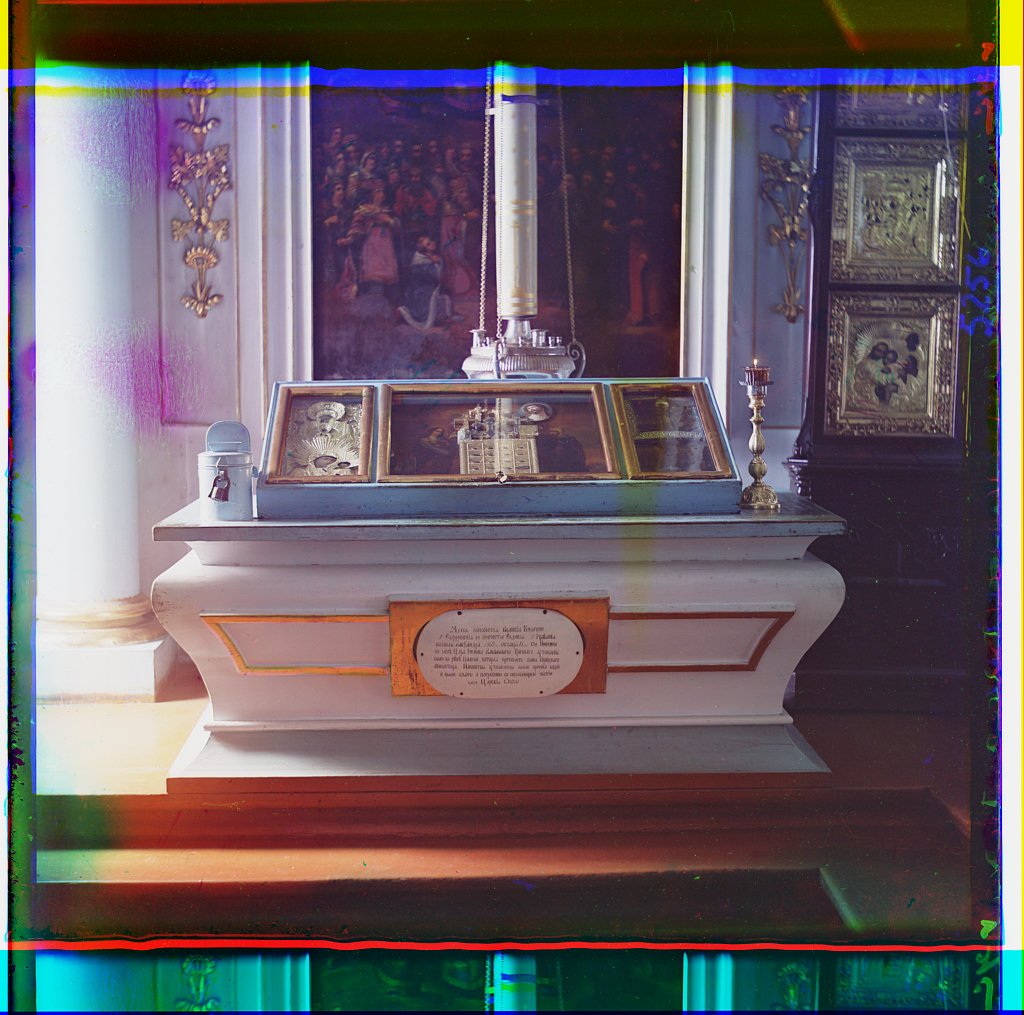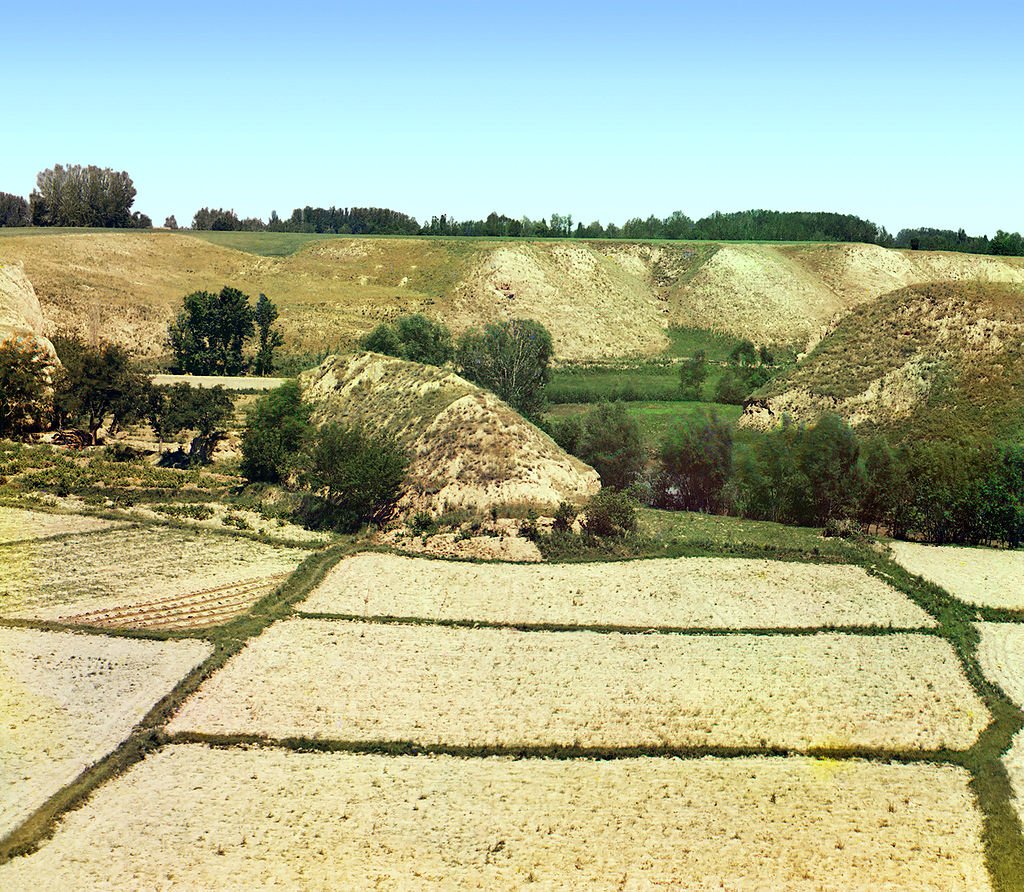Imperial Mindset
Russian colonialism in the former Empire, via Prokudin-Gorsky’s early colour photography in Ukraine.
In what ways is the modern Russian aggression similar to past Imperial attitudes and rule in Ukraine? How does it differ?
How consensual was the Empire/USSR in Ukraine?
What was the methodology of Imperial dominance through the ages? How is it similar to the rhetoric and actions of Russia in the modern day, in Ukraine and elsewhere?
In what ways did Ukrainians actively resist colonialism in the past and present?
Some of these questions have obvious answers. There are clear links between past and present. By emulating the style of an Imperial-era photographer, the links between the historic and current colonial thinking and actions can be conceptually linked in a visual, easy to appreciate, format.
Much is speculated about the cause of the war in the Western media. Some say it is personally ‘Putin’s war’, but it is hundreds of thousands of ordinary Russian citizens who are actively engaged in killing Ukrainians now. Some for the rare financial opportunity, some willingly and with ideological reason. Even Navalny, Putin’s main critic and political opponent - until he was murdered as a political prisoner - supported the undemocratic annexation of Crimea. It is widely accepted that Putin has a wide base of genuine support of ordinary Russians, despite critics and politically motivated emigrées.
The Russian people have certainly been taken prisoner by their modern police state, but Russian culture and literature is filled with a base level of Imperial exceptionalism: the modern state is merely an extension of a centuries-long habit of enforced hegemony and Russification policies and culture.
This Imperial Mindset must somehow be overthrown if a lasting peace in Russia’s neighbouring regions is to be achieved. The underlying problem is colonialism.
This photoseries will use the example of post-invasion Ukraine to show examples of the methods of colonial and imperial control that Russia has exerted on its neighbouring territories for hundreds of years, first in the Empire, then the Bolshevik coups and Soviet Union/Empire and now as its nationalist, probably-fascist, mega-state seeking a ‘sphere of influence’, or ‘Ruskii Mir’, of centralised Muscovite control. We will also look at the equally long history of resistance to their control.
While Ukraine is a clear and brutal example, this story of colonialism applies equally to all other parts of the Empire: from the Baltics to Central Asia, via much of Eastern Europe, Georgia and the Caucasus. Russia currently illegally controls and occupies regions of Moldova, Georgia and Ukraine and coercively issues passports to these regions, but they do not gain democratic rights or status as citizens: they are imperial subjects: these occupied territories are colonies and the people merely political tools and potential cheap labour or military conscripts.
Sergei Prokudin-Gorsky (rightmost, with the rifle and dog) was a pioneer of colour photography working across the Russian Empire. About 2000 images survive.
He was an avowed supporter of the Imperial project and themes of colonialism appear throughout his work.
Using his distinctive technique, I will show the methodology of Russian colonialism in the modern day.
Вхід до храму Святої Анни в Ексетері \\
L'Eglise Orthodoxe de Saint Anne à Exeter, avec le Rév. Dr. Brandon Gallaher
Brandon is a co-author of "A Declaration on the "Russian World" (Russkii Mir) Teaching", a powerful document which has attracted over 1500 signatures, many of which are from Orthadox theologians. It is published by the Volos Acadamy.
It condemns the leaders of the Russian Orthadox Church (ROC) who are promoting this nationalist ideology, particularly their use of it to encourage and justify the war in Ukraine and to create division and damage within the wider Orthadox community.
Russkii Mir is a broad ideology centred on Russia's political, cultural and moral importance especially within a transnational Russian civilisation. This geographical area is based on a reimagined Holy Rus' - a precursor nation to Russia, Ukraine and the later Empire; it also encompasses anyone who speaks Russian language, or is ethnically Russian anywhere in the world. The ideology stands in contrast to the corrupt and corrupting West and the image of its modern, liberal (im)morality. These teachings have been accepted into both Church teachings as well as Russian Foreign Policy.
Rev. Dr. Gallaher actively works to encourage ecumenical discussion between branches of Orthadoxy and interfaith dialogue, in part through his work with the Volos Foundation. He is a lecturer in Theology at the University of Exeter.
His church in Exeter has split from the Moscow Patriarchate.
----
Prokudin-Gorsky's body of work is peppered with ecclesiastical subjects: churches, monasteries, icons and relics. The Tsars maintained control of the Church by selecting bishops to a ruling Synod, in this way ensuring the Church backed the Tsar's policies.
As God's appointed representative on Earth, Orthadoxy was a fundamental pillar of the official ideology introduced by Tsar Alexander II: Orthodoxy, Autocracy, and Nationality.
As Prokudin-Gorsky's sponsor, his photographic themes were chosen to meet with the Tsar's personal approval and glorification of his imperial majesty.
რუსული ტიპები \\ Russian Types, Tbilisi
Prokudin-Gorsky recorded ethnographic subjects while documenting the Russian Empire. Dagestan had risen against Russian Imperial rule in 1878, and was brutally suppressed. His portraits are made about 30 years later with the eye of an Imperial visitor. The names of his subjects are not recorded - they are merely 'Types': typical examples of __.
Georgia was also part of the Russian Empire and a place P-G photographed extensively. Since the start of the war, thousands of Russians have emigrated to make new lives in Tbilisi. Foreigners in general who settle here tread the ambiguous line between being guests in the country and being modern-day imperialists themselves. This line is scrutinised ever harder for Russians who live as guests in their now-independent former Empire.
Anton works with @after_russia_org to provide a platform for Russian speaking people who are against the war to re-evaluate the Russian past and find a new post-Russia (post-Imperial) identity. Natalie is a visual artist and animator.
----
Prokudin-Gorsky himself became an émigré in Paris as he fled the violence and danger of the early Soviet Union. He died in exile.
Below: “The First Russian Church in Artvin” (modern day Turkey, recently acquired into the Empire); “Dagestani Types”
“In Little Russia”, 1905. Putyvl, using the Imperial Russian name for Ukraine at the time. This references the colonialist theory that Ukrainians are part of an ethnic nation of Russians that is still widely expressed by modern-day Russians.
Note the rustic and exotic, Ukrainian houses framed to contrast with the bright, white Russian church of imported civilisation.
Below: Kyiv, May 1905
The photographer Prokudin-Gorsky (brown coat and hat) at camp on a trip to the East. Russia beyond the Urals was brought into the Empire by hard power and violent subjugation of the indigenous people. A genre of ‘Eastern’ film was later developed to reflect the ‘Western’ films of America.
Below: a Ukrainian “Little Russian” rural woman - P-G wrote in his diary that he made images of picturesque peasants specifically to interest the Tsar.
Between 1904 and 1915, Sergei Prokudin-Gorsky travelled throughout the Russian Empire. Personally sponsored by the Tsar, he created images of the latest technological and infrastructure advances of the Empire, as well as ethnological images of urban and rural life, of khans and scruffy peasant farm workers and magnificent architectural wonders.
Prokudin-Gorsky looks at the Empire with an Imperial, Russian-centred gaze and mindset. The Empire comes to the unwashed, folk-cultured people and brings them railways and Russian churches. The local cultures' dress and customs are curiosities to be recorded, examined, and studied back in Moscow and St. Petersburg. His colonialist viewpoint is often overlooked when analysing his work.
His own writings about his project confirm this colonialist viewpoint. He wanted the images to be used for the ‘study of the fatherland’ and to ‘arouse love for the motherland, interest in studying its beauties and inexhaustible riches, without which it is unthinkable to teach truly patriotic feelings to the youth.’ He writes at length about the natural and ethnographic wonders of Russia, citing areas of modern-day Poland, Ukraine (and Crimea), the Caucasus, as well as the quaint image of ‘Lapps and Pomors work(ing) in their traditional costumes’ in the far north. The heart of Russia and its culture goes unmentioned while these acquired territories hold the country’s cultural glories.
A committed Tsarist, he fled Russia on hearing the news of the Tsar’s murder, eventually dying in exile in Paris. He left behind an extraordinary and unique legacy of over 2,000 surviving colour images of pre-Revolution Russia which are stored in the Library of Congress in the USA.
The methodology of Empire
Russia’s methods of Imperial control have been generally consistent through the ages. Prokudin-Gorsky covered several of them, sometimes as deliberate themes, sometimes as incidental traits in his images. All of these have taken full force in Ukraine under occupation and can be seen in occupied Georgia as well as to a lesser extent in the independent former Empire or in Russian propaganda and publications directed internally and at the wider world.
Violent control of people, their homes and their land.
Religious zealotry and intolerance, establishing the politicised Russian Orthodox Church to unify and as a means of control.
Elimination of ethnic groups and nations:
by systematic threats and acts of violence
assimilation and absorption (the denial of cultural difference and requirement to change identity is the hallmark of Russian racism)
bureaucratic methods
control of language, including control of the press and media and languages of publication
re-evaluation of historical fact and memory
control of children’s education and cultural upbringing
Political subjugation and removal of representation.
Extractive exploitation of the conquered lands.
Forced evictions/deportations.
An ideological justification of Russian benevolence.





![Group of children. [Russian Empire]. Russian children sitting on the side of a hill near a church and bell tower in Belozyorsk, in the north of European Russia..jpg](https://images.squarespace-cdn.com/content/v1/675c9a1283b25235ec3e6e36/e12a9c8e-5ade-492e-8c67-103856ee6caa/Group+of+children.+%5BRussian+Empire%5D.+Russian+children+sitting+on+the+side+of+a+hill+near+a+church+and+bell+tower+in+Belozyorsk%2C+in+the+north+of+European+Russia..jpg)







![Saint Dalmat's hauberk and helmet. [Dalmatovo]..jpg](https://images.squarespace-cdn.com/content/v1/675c9a1283b25235ec3e6e36/2ad8eb2c-459c-4adc-be1b-af9ced85ec7e/Saint+Dalmat%27s+hauberk+and+helmet.+%5BDalmatovo%5D..jpg)






























Protest in Trafalgar Square, London, on the 3rd anniversary of the full-scale invasion of Ukraine, February 2025.
Selected examples of colonialist and Imperialist thought in Georgia, Ukraine and in analysis of P-G’s work:
1,2: Excerpts from speeches in the UK parliament in 1920 on the Bolshevik takeover of Georgia.
3: The pro-Russia ‘Georgian Dream’ party justifying its stance ahead of elections (later marred with numerous election violations): image of war devastation in Ukraine,“no war!” which will result from election candidates 4, 5, 25 or 9, and the claimed results of peace with Russia and a vote for number 41, Georgian Dream.
4: A Russian photographer blogger who turned from Soviet architecture to nationalistic pro-war content. Here he claims Ukrainians to be ‘primative peasants’ inhabiting part of the ‘Third Roman Empire’ - an ancient call of the Russian Empire to occupy Istanbul and claim legitimacy of the Russian Orthodox Church and State as the heir to the true Byzantine Church and to Roman civilisation, power and Empire.
5, 6: Excerpts from Margaret Dikovitskaya’s article: ‘Central Asia in Early Photographs: Russian Colonial Attitudes and Visual Culture’.













